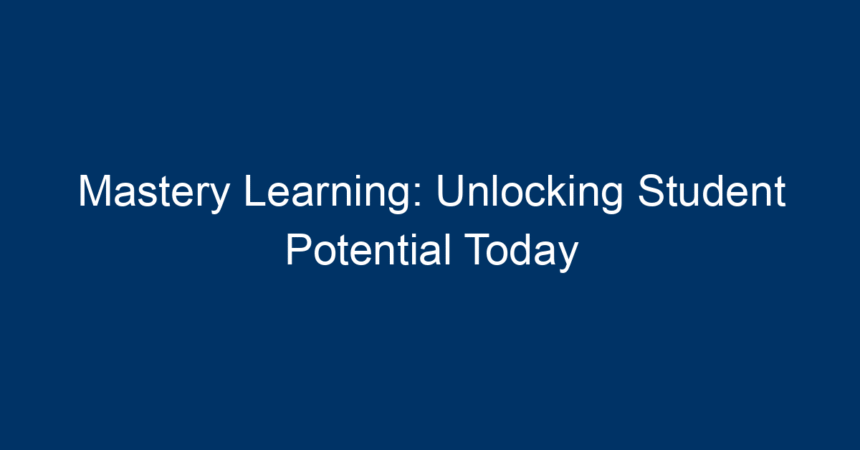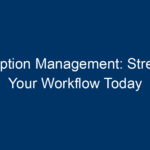In an era where education is rapidly evolving, the emphasis on effective teaching methods has never been more critical. One approach that stands out is mastery learning—a strategy designed to empower students to achieve a deeper understanding of the material. By prioritizing mastery over traditional assessment methods, educators aim to foster a growth mindset that unlocks student potential. In this comprehensive guide, we’ll explore what mastery learning is, its key elements, how it compares to traditional learning methods, the benefits it offers, and actionable insights to implement it in the classroom.
What is Mastery Learning?
Mastery learning is an instructional strategy that focuses on ensuring all students achieve a high level of understanding in a given subject before progressing to the next level. This approach is grounded in the belief that students learn at different rates and that mastery is achievable for everyone with the right support.
The concept was pioneered by educational psychologist Benjamin Bloom in the 1960s, who posited that if students were given the time and resources, they could achieve mastery in their studies. Mastery learning systems often include frequent assessments, feedback, and the opportunity to relearn material until a student can demonstrate their understanding.
Key Elements of Mastery Learning
To effectively implement mastery learning, educators should consider several key components:
1. Clear Learning Objectives
At the heart of mastery learning is the establishment of clear learning objectives. These objectives outline what students need to know and be able to do by the end of the learning period. Clarity in these goals ensures that both students and teachers have a mutual understanding of the expected outcomes.
2. Formative Assessments
Regular formative assessments are essential for tracking student progress. These assessments help educators identify areas where students are struggling, allowing for timely intervention. Unlike traditional testing methods, formative assessments focus on the learning process rather than just the final product.
3. Feedback Mechanism
Quality feedback is crucial in a mastery learning environment. Constructive feedback helps students understand their mistakes and provides guidance on how to improve. Educators should provide timely and specific feedback to encourage growth and reinforce positive learning behaviors.
4. Opportunities for Practice
In mastery learning, practice is not just encouraged but is fundamental. Students need ample opportunities to practice skills and concepts until they achieve mastery. This might involve varied instructional methods, including group work, individual projects, or interactive exercises.
5. Individualized Learning Paths
Recognizing that each student learns differently is vital in mastery learning. Tailoring learning experiences to individual needs—whether through differentiated assignments or personalized learning plans—ensures that every student can progress at their pace and achieve mastery.
Mastery Learning vs. Traditional Learning
Traditional Learning
In traditional educational models, students often move on to new topics based on a predetermined schedule, regardless of whether they’ve fully grasped the material. This approach can leave behind students who need more time to absorb concepts, potentially leading to gaps in knowledge.
Mastery Learning
In contrast, mastery learning emphasizes perfection before progression. Students must demonstrate understanding through assessments and feedback before they proceed. This method not only enhances knowledge retention but also builds confidence in students, making them more likely to engage in future learning.
Benefits of Mastery Learning
1. Enhanced Understanding
By focusing on mastery, students develop a deeper comprehension of the material instead of cramming for tests. This long-term understanding is crucial for future learning in more complex subjects.
2. Increased Student Engagement
Mastery learning cultivates a sense of ownership over education. When students know they can continuously improve until they master a skill, they are more likely to participate actively in their learning journey.
3. Boosted Confidence
Students who experience success in mastering concepts develop confidence in their abilities. This self-efficacy fosters a positive attitude towards learning and encourages resilience in the face of challenges.
4. Greater Equity in Education
Mastery learning promotes equity by ensuring that all students, regardless of their starting point, have the time and resources to succeed. This approach acknowledges the diverse learning paces and styles among students.
Implementing Mastery Learning in the Classroom
To successfully integrate mastery learning into the classroom, educators can take several actionable steps:
1. Establish Clear and Measurable Goals
Start by defining clear, measurable learning objectives for each unit or topic. These should be specific and aligned with curriculum standards.
2. Utilize Technology
Leverage educational technology tools to create personalized learning experiences. Platforms that allow for customized quizzes and adaptive learning pathways can help accommodate different learning speeds.
3. Incorporate Collaborative Learning
Foster collaboration through group projects and peer assessments. Working together encourages students to learn from one another and build a supportive learning community.
4. Create a Safe Learning Environment
Develop a classroom culture where mistakes are considered learning opportunities. Encourage students to ask questions and seek clarification without fear of judgment.
5. Regularly Review and Adjust
Consistently monitor student progress through formative assessments and be willing to adjust instructional methods based on student needs. Flexibility is essential to ensure that all students reach mastery.
Conclusion: Unlocking Potential Through Mastery Learning
Mastery learning is not just a teaching strategy; it’s a powerful movement toward unlocking the full potential of every student. By prioritizing mastery over mere progression, educators can foster an environment where all learners thrive.
As we move forward, the commitment to mastery learning can help dismantle the barriers that often hinder student success. It can lead to a generation of confident, engaged learners who embrace challenges with resilience and enthusiasm.
By understanding the principles of mastery learning and implementing these actionable insights, educators can make significant strides toward an inclusive and effective educational system that prepares students for lifelong learning. The future of education hinges on our ability to adapt and innovate, and mastery learning provides a compelling model for achieving that goal.




